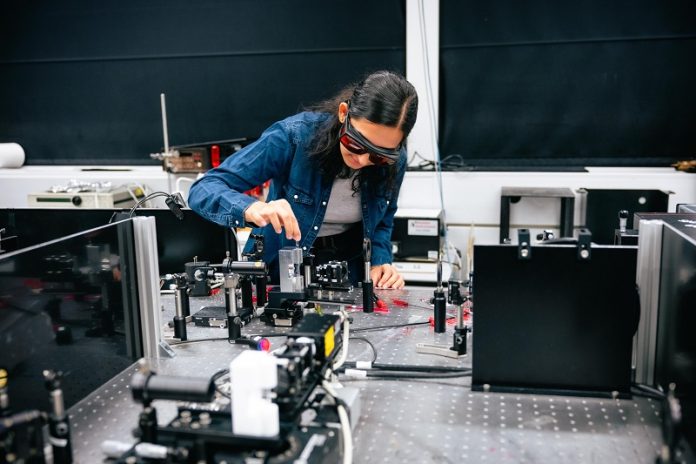
Researchers at EPFL have developed a new technique that lets scientists observe water molecules as they form hydrogen bonds, which are crucial to water’s unique properties.
The method, called Correlated Vibrational Spectroscopy (CVS), allows researchers to measure the electronic and quantum effects of these bonds for the first time without relying on theoretical simulations.
Water’s unique characteristics, such as its ability to sustain life, stem from how its molecules bond together.
These bonds, known as hydrogen bonds, occur when the hydrogen and oxygen atoms of different water molecules interact and share their electric charge. However, understanding the quantum details of these bonds has always been challenging.
The team, led by Sylvie Roke from EPFL’s School of Engineering, published their findings in Science.
The new CVS method allows scientists to distinguish between two types of water molecules: those participating in hydrogen bonds and those that are not.
Previously, other spectroscopy methods could only measure both types of molecules together, making it difficult to identify their unique characteristics.
To understand water’s behavior, the researchers used extremely short laser pulses, lasting just a quadrillionth of a second (femtoseconds), in the near-infrared range.
These ultra-fast pulses caused tiny oscillations and displacements within the water molecules, which emitted visible light in a scattering pattern.
The light’s color revealed information about atomic movements within and between the molecules, while the scattering pattern showed their spatial arrangement.
Unlike traditional methods, which place a spectrographic detector at a 90-degree angle to the laser beam, the EPFL team changed the detector’s position and used different combinations of polarized light. This approach allowed them to create separate spectra for molecules involved in hydrogen bonding and those that were not.
“Each type of water molecule has its own unique vibrational spectrum,” explained Roke. “By focusing on the spectrum related to hydrogen bonds, we can directly measure properties like charge sharing and bond strength.”
In their experiments, the researchers also used CVS to study how changing the water’s pH level affected hydrogen bonds. They did this by adding hydroxide ions (to make the water more basic) or protons (to make it more acidic). They found that hydroxide ions contributed 8% more charge to the hydrogen bonds, while protons accepted 4% of the charge—details that had not been experimentally measurable before.
These results were supported by advanced simulations carried out by collaborators in France, Italy, and the U.K.
The team emphasized that CVS is not limited to studying water. “The ability to measure hydrogen bond strength directly is a powerful tool,” Roke said. “It can help us understand molecular-level details in any solution, such as those containing sugars, proteins, or even DNA.” CVS could be used to explore a wide range of liquids, systems, and processes, offering new insights beyond what was previously possible.
This breakthrough in spectroscopy opens up exciting new opportunities to explore the fundamental interactions that give water and other liquids their unique properties.



